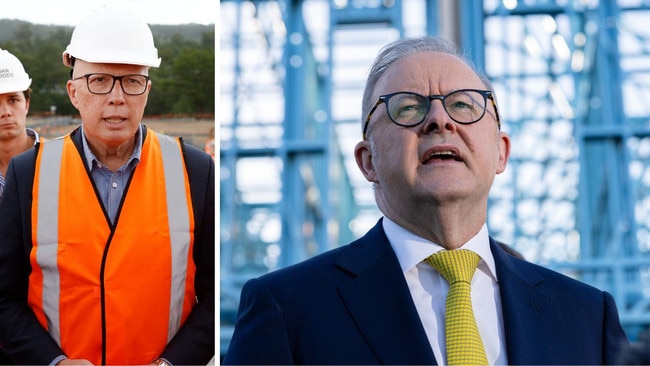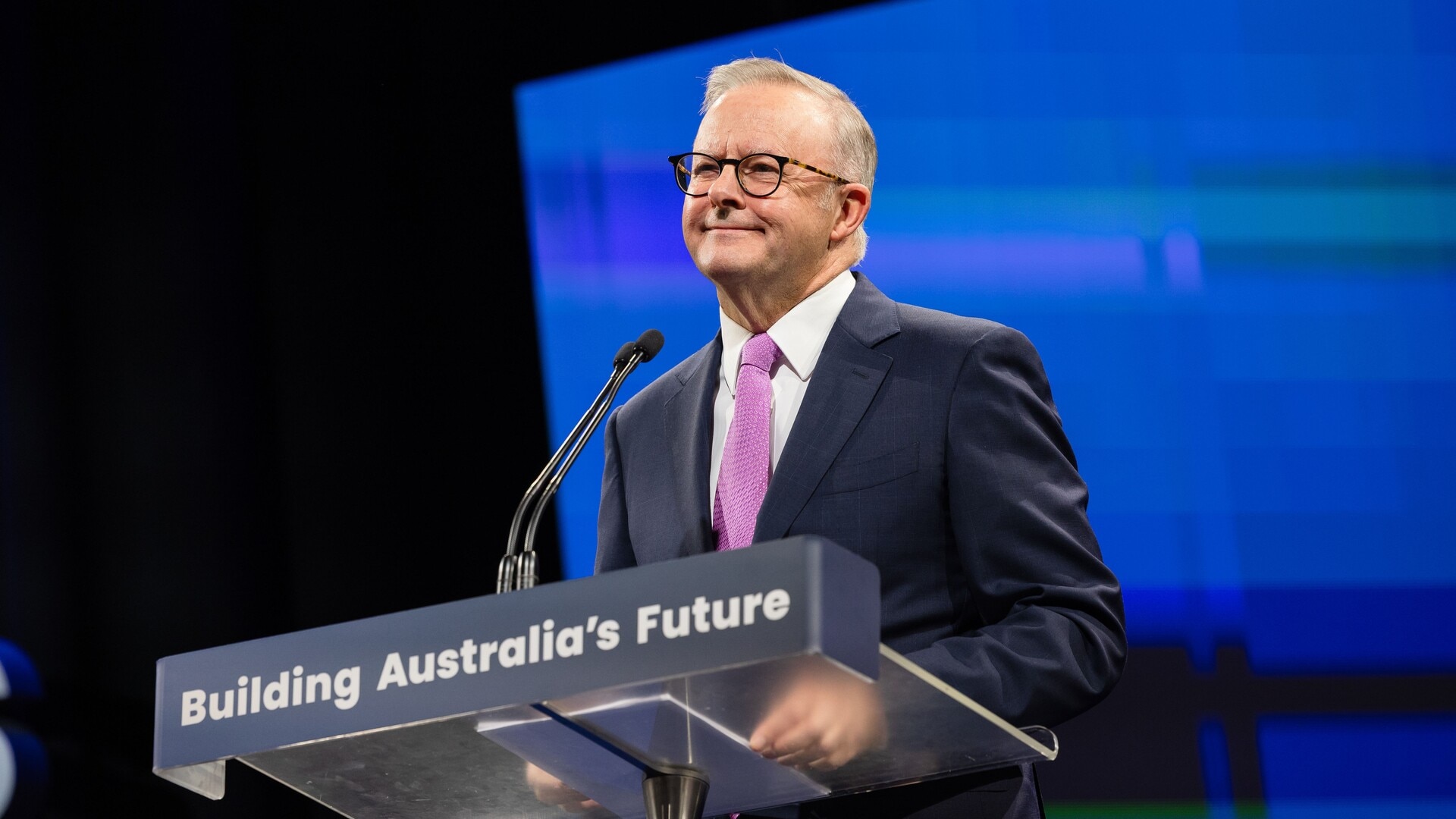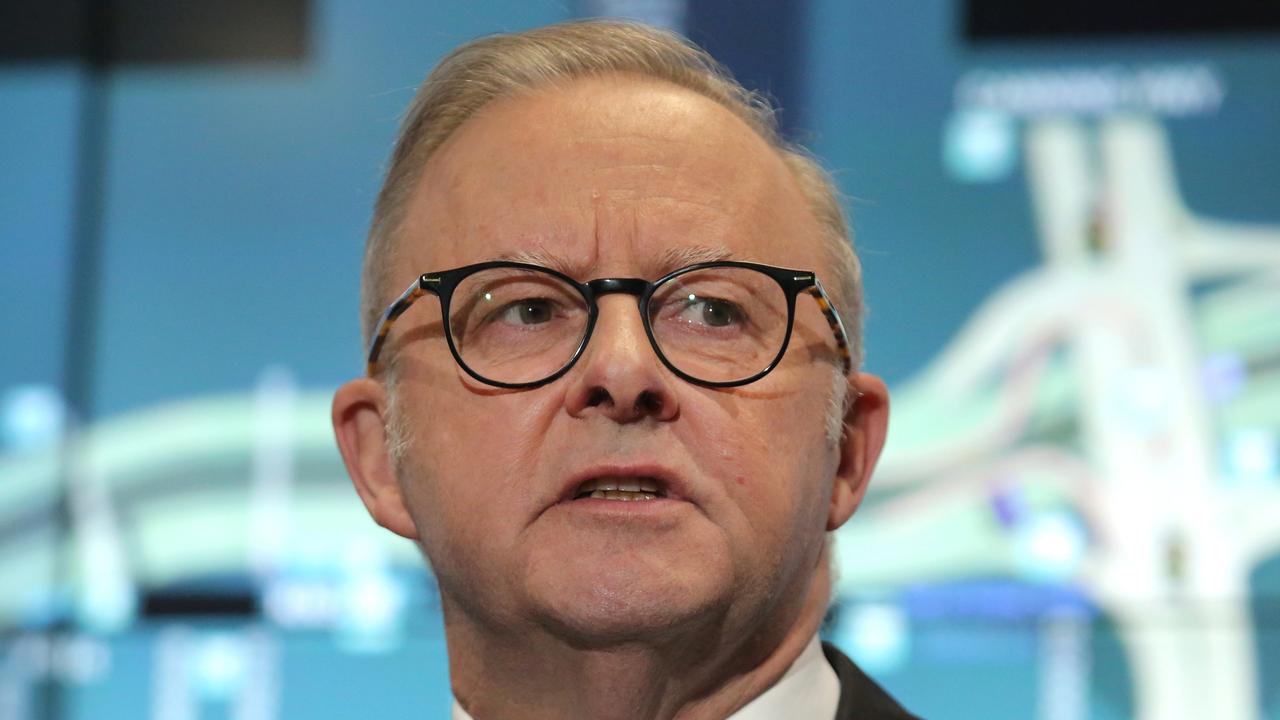Election 2025: Anthony Albanese, Peter Dutton play down risks of housing policies
Labor and the Coalition have attacked economists who said their property policies would lift house prices by as much as 15 per cent this year.

Anthony Albanese brushed off fears his election plan to let buyers purchase houses with a 5 per cent deposit presented greater risks to the housing market, as Labor and the Coalition attacked economists who said their property policies would lift house prices by as much as 15 per cent this year.
Both parties are competing for voters with big-spending housing policies, but economists and property experts say a focus on lowering serviceability thresholds and deposit requirements as well as offering tax credits on interest payments would just boost prices and leave greater risk in the system.
The Prime Minister played down concerns, saying default rates under the Home Guarantee Scheme, which allows buyers to have just 5 per cent deposit with a government guarantee, were low and would stay low.
“There’s 150,000 people who have already been through that system. How many defaults have there been? Three out of 150,000,” Mr Albanese said.
Jim Chalmers said he was “extremely confident” that the program was a “responsible way” to get more first-home buyers into the market. While the program, which began under the Morrison government and will be matched by the opposition, has low default rates, arrears on new loans have started to rise.
Ratings agency Fitch Ratings records that 1.2 per cent of home loans originated in 2023 were more than 30 days in arrears, more than the average of 0.5 per cent for all earlier originated loans, partly because borrowers didn’t have big enough “savings buffers”.

US-based Australian economist Steve Hamilton said the policies had the hallmark of a subprime crisis in the making where low to no income workers were owning homes.
“Some of these policies are akin to the subprime lending,” he said.
“There are risks here. You should not be designing housing policy to allow everyone to buy.
“What would happen if we are easing with this subprime style lending and we had lower serviceability and in nine months a global recession hits – what happens to all the people if they can’t cover their loans?”
As the Reserve Bank is set to cut interest rates further and with both parties offering massive incentives for lower income borrowers, economists and property experts such as SQM’s Louis Christopher said residential property prices would rise between 8 to 15 per cent this year, depending on who won the election.
“All else being equal, the Coalition’s policies will probably mean home prices will be up 15 per cent,” he said.
“Labor’s will also increase demand – they will probably end up 8 per cent.”
Both Mr Albanese and opposition campaign spokesman James Paterson hit out at economists who criticised their landmark housing policies at the weekend.
Mr Albanese on Monday said veteran budget watcher Chris Richardson – who said Labor’s plan would add too much demand to the housing market – should talk to people who needed help buying their first home.
“I’m happy to bring Chris Richardson here, have a look at the construction, have a look at the jobs that are being created here, have a look at the economic activity that’s right here, and then I’m happy to bring him back and meet the people who are living here in a home as well,” Mr Albanese said.

Mr Richardson did not respond to the Prime Minister.
Senator Paterson also hit out at economists such as Mr Richardson, calling them “out of touch”.
“I have seen some of that commentary from economists and others, and I have to say when it comes from someone who owns their own home and probably bought it many years ago, it’s going to come across to many Australians as frankly pretty out of touch and tone deaf,” Senator Paterson told the ABC.
Independent economist Saul Eslake said the Albanese government’s proposals would have a smaller impact in house price inflation than the Coalition’s policies “but they will both have the effect of enriching those who already own homes at the expense of those who don’t or who can’t.”
With both parties focused on first-home buyers and those who can’t afford a 20 per cent deposit, CoreLogic head of research Tim Lawless said the focus on riskier borrowers with smaller deposits and less ability to service debt was a growing risk, even as house prices climbed.
“There is definitely higher risk and higher risk rates for higher loan to value buyers defaulting,” Mr Lawless said.
“Political, demand-driven policies mean we are going to move into much stronger house price growth in 2024. House prices rose 5 per cent last year and we think in 2025, given the new policies, we will see them rise by more than that.”
One area about which Mr Lawless had particular misgivings was the Coalition’s decision to reduce the serviceability buffer on home loans from 3 per cent to 2.5 per cent. The buffer represents a multiple of the interest rate a borrower can service and is regulated by the Australian Prudential Regulation Authority.
“APRA is there for a reason. I can’t see why a government should be wading into this area,” Mr Lawless said.
Commonwealth Bank chief executive Matt Comyn has been a supporter of the serviceability buffer, saying last year that “You have to get the right balance between economic growth, for which credit creation is really important, and financial stability.”
The Coalition’s other housing policies that would boost demand include accessing superannuation for a home deposit and providing an interest payment tax credit for first-home buyers of new build homes.
On Monday, the Washington-based International Monetary Fund released a report indicating that global geopolitical risks remained elevated, raising concerns about their potential impact on financial stability, noting that geopolitical tensions could adversely affect banks’ balance sheets and lending.
“Borrower creditworthiness can deteriorate after a major domestic geopolitical risk event, and banks may cut back lending amid heightened uncertainty.”
Mr Lawless said one of the key risks now for Australians was that they had smaller savings buffers.
“ We also have the problem of lower savings. Households have really struggled to save and cover essential living costs as well as their debts.”
However, if there was a crisis much would depend on the response from the Reserve Bank and government.
“People did fear a housing implosion during the last global recession but it came down to the policy response. Last time there was record level of fiscal and monetary policy and housing survived,” Mr Lawless said.
Other financially prudential restrictions were introduced last decade, including a 10 per cent restriction on banks’ credit growth and interest only loans capped at 30 per cent of a bank’s lending book.




To join the conversation, please log in. Don't have an account? Register
Join the conversation, you are commenting as Logout